Tide Indicator
A little history
The modern scientific study of tides dates back to Isaac Newton's Principia of 1687, in which he applied the theory of gravitation to make a first approximation of the effects of the Moon and the Sun on the Earth's tides. The approach developed by Newton and his successors for the next 90 years is known as the "equilibrium theory" of the tides.
Beginning in the 1770s, Pierre-Simon Laplace made a fundamental advance in the equilibrium approximation by considering the non-equilibrium dynamical aspects of tidal motion that occur in response to tidal generating forces due to the Moon and the Sun.
By the 1870s, astronomical theories of the Moon and the Sun had identified the frequencies and different components of the tidal force. But effective prediction anywhere required measurement of an adequate sample of local tidal observations. These observations had to be analysed to obtain the coefficients and phase angles. Then, for prediction purposes, those local tidal constants had to be recombined, each with a different component of the tidal generating forces to which it applied, and at each a sequence of future dates and times. In the days when calculations were done by hand and brain, with pencil, paper, and tables, this was recognized as an immensely laborious and error-prone undertaking.
William Thomson (Belfast 1824- Largs 1907) recognized that what was needed was an automated way of repeatedly evaluating the sum of tidal terms.
Who made the first tidal forecasting machine?
Knowledge of the tides was invaluable not only to sailors, but also to engineers building coastal structures and fishermen working in shallow water. Since the tides are affected by many astronomical cycles with different periods, predicting them is mathematically complex. William Thomson applied the technique of harmonic analysis to the tides and designed a mechanical computer to predict tidal curves at any location. It was the first tidal forecasting machine made in 1872-73, with the collaboration of Edward Roberts, and built by Alexander Légé in London. It was a mechanical analogue computer that plotted the tidal curve for a given location by combining ten astronomical components. The machine was able to draw predictions of tidal curves for a given port or location for a year in about four hours.
The 10-component machine and the results obtained from it were shown at the Paris Exposition in 1878. This was perfected until it calculated 24 harmonic components (William Ferrel, United States 1881-1882).
Experience-based development and improvement of these early machines continued through the first half of the 20th century. The main objective was the search for precision and miniaturization.
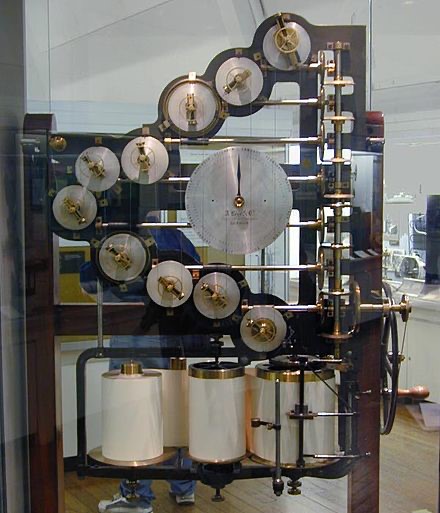
10-Component Tide Forecasting Machine (1872-1873), by William Thomson (Lord Kelvin), in the South Kensington Science Museum, London
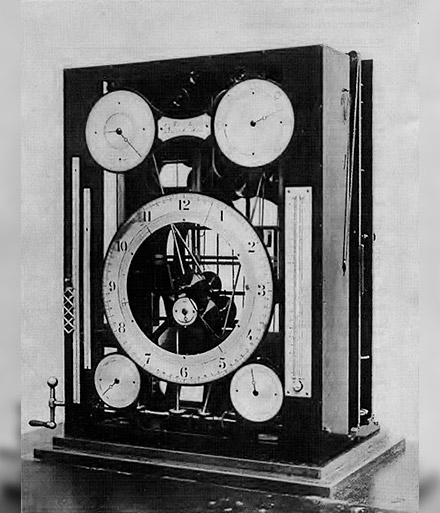
William Ferrel's (1881-1882) Tide Predicting Machine, now in the Smithsonian National Museum of American History
What is it and why use a TIDE CLOCK (or indicator)?
An indicator or tide clock is an instrument that allows us to know the time remaining for high tide or low tide.
If you don't want this to happen to you...
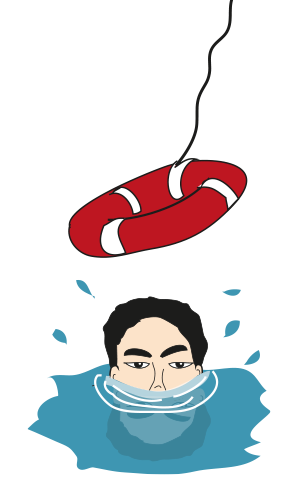
Every year, bathers, or simple walkers are victims of high tides. Some get stuck on sandbars or rocks when the tide comes in. Others find themselves in trouble, carried away by the current when the sea rises or falls rapidly.
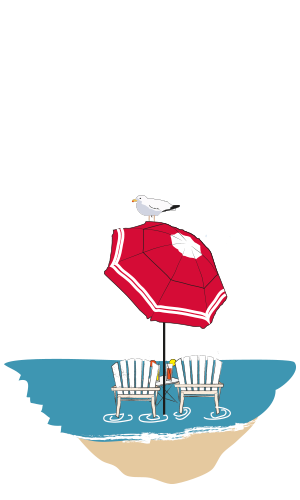
On an Atlantic beach or any other ocean if you don't know when the tide rises, you can find your towel covered by water and your cooler with your picnic inside floating in the sea.
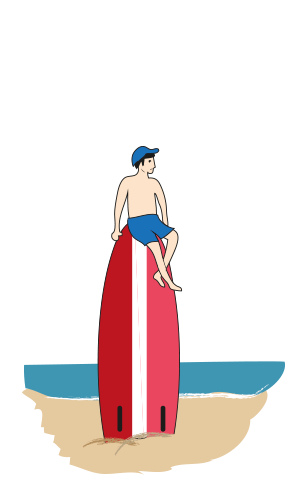
Are you a surfer? You will be interested in knowing the exact tidal point that will allow you to choose the best time to go surfing. There are spots that work better at low tide, others at high tide, and others in transitions from low to high or vice versa.
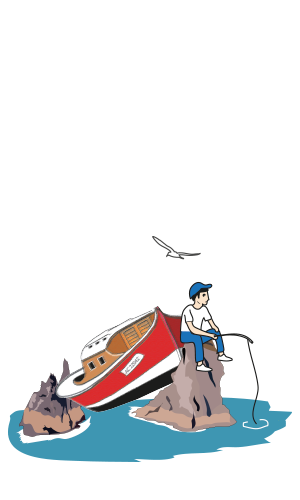
If you don't want to grab the spotlight and make the front page of the newspaper with a rescue team because you've been stranded on rocks or a sandbar, better check the tide calendar!
In conclusion: Tides are very important in coastal areas, and in activities planned around the water or beach.
The amplitude of the tides can vary a lot from one week to another. If you go fishing, swimming or sailing: check the schedules and tidal coefficients. The higher the coefficient, the greater the tidal amplitude. The larger the sea, the higher the tides, that is the reason why in the Mediterranean the tides are smaller and in the swimming pool of the sports centre they are non-existent
What causes the tides?
Tides are changes in sea level that are repeated several times over the course of 24 hours. Every day, the sea rises and falls with amplitudes that can reach 14 meters. The main reason for these changes lies in the forces of gravitational attraction exerted by both the Sun and the Moon on our planet. These forces are what cause the movements of ocean water.
The attraction of the Moon and the Sun towards the Earth is complete; that is to say, it not only affects the liquid part but the solid part is also affected. However, the tides that take place in the lithosphere (the solid surface layer of the Earth) are hardly appreciated.
The Moon, being located closer to the Earth than the Sun, exerts a much greater force of attraction, which makes it the main cause of the movements of the seas.
By action of the gravitational force, our planet and the Moon form a set that revolves around a centre of rotation. When the Moon is located in a straight line with an Ocean, the forces of attraction it exerts on the Earth and the water rise, giving rise to the high tide. On the other hand, in those areas of the Oceans that are not suffering the incidence of the Moon, the forces of gravity and centrifugal counteract each other, so that low tide occurs.
At the moment that the Sun and the Moon form a straight line towards the Earth, the attraction effects of both come together, causing spring tides (very high coefficient). They take place when the Moon is full. When the Moon and the Sun form a right angle with respect to the Earth, the attraction effects oppose each other and neap tides occur (very low coefficient).
The tidal coefficient has a value between 20 and 120. The higher it is, the higher the sea rises and therefore the stronger the tide. When it exceeds 90, we speak of high tide; above 118, we speak of the tide of the century.
How long is there between tides? Since the moon revolves around the earth in 24h50, there is an interval of approximately 12h25 between two high or low tides, and an interval of approximately 6h12 between a low tide and a high tide. Therefore, there are 4 tides per day: two high tides and two low tides every 24 hours.
Every day the tide time changes an average of 50 minutes. Be careful, different parameters slightly modify this rhythm, so it is important to systematically consult the tide times available on the Internet or in the tide calendars.
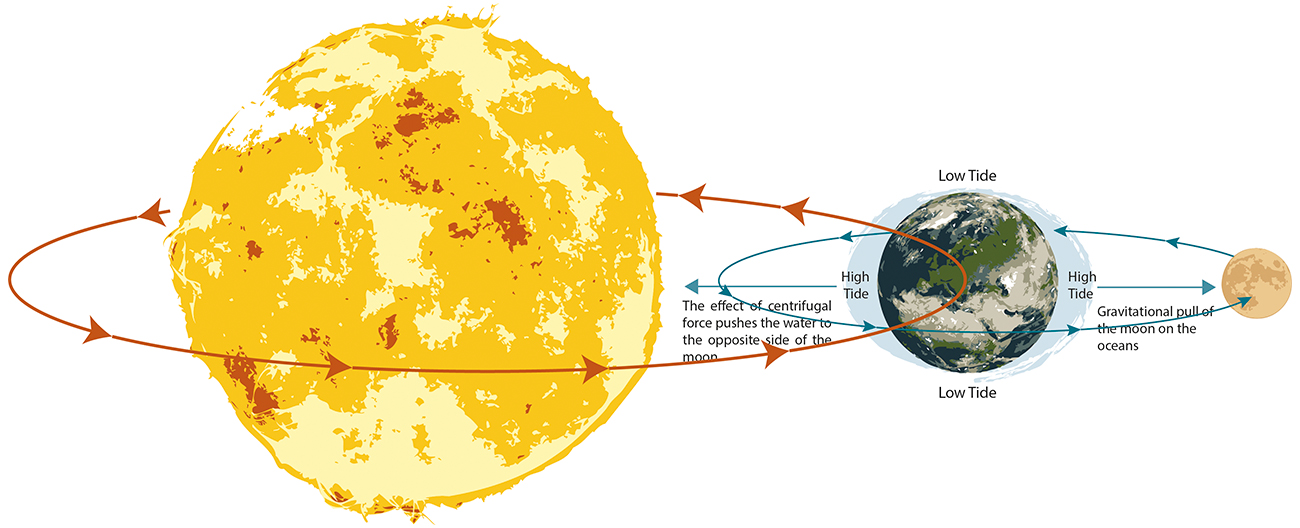
How to read a tide clock?
Follow the needle!
The needle rotates clockwise and indicates the state of the tide in real time. Depending on the position of its needle, we will know the time remaining for the rise or fall of water in the oceans and seas.
. Falling tide - right side of the dial: The needle indicates HIGH TIDE up to LOW with indicators from 1 to 5.
. Ridge tide - left side of the dial: The needle indicates LOW TIDE up to HIGH TIDE with indicators from 1 to 5.
In conclusion: When the needle is to the right of the sphere and is rising, the tide is rising. When the needle is to the left of the dial and is going down, the tide is out!
How to adjust your tide clock?
For it to work properly, two important things are needed:
. 1 AA battery. The needle rotates thanks to a quartz mechanism, but you have to give it a boost!
. Adjust the tide gauge. The tide schedule in Cornwall is not the same as in Norfolk.
How to do it? Easy!
Check a tide calendar for the port or the area closest to your home. You can do it by consulting:
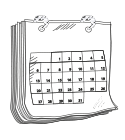
The local newspaper

The website: https://www.tide-forecast.com/
Choose a day with high coefficient and full moon to set the clock (coefficient between 85 and 110).
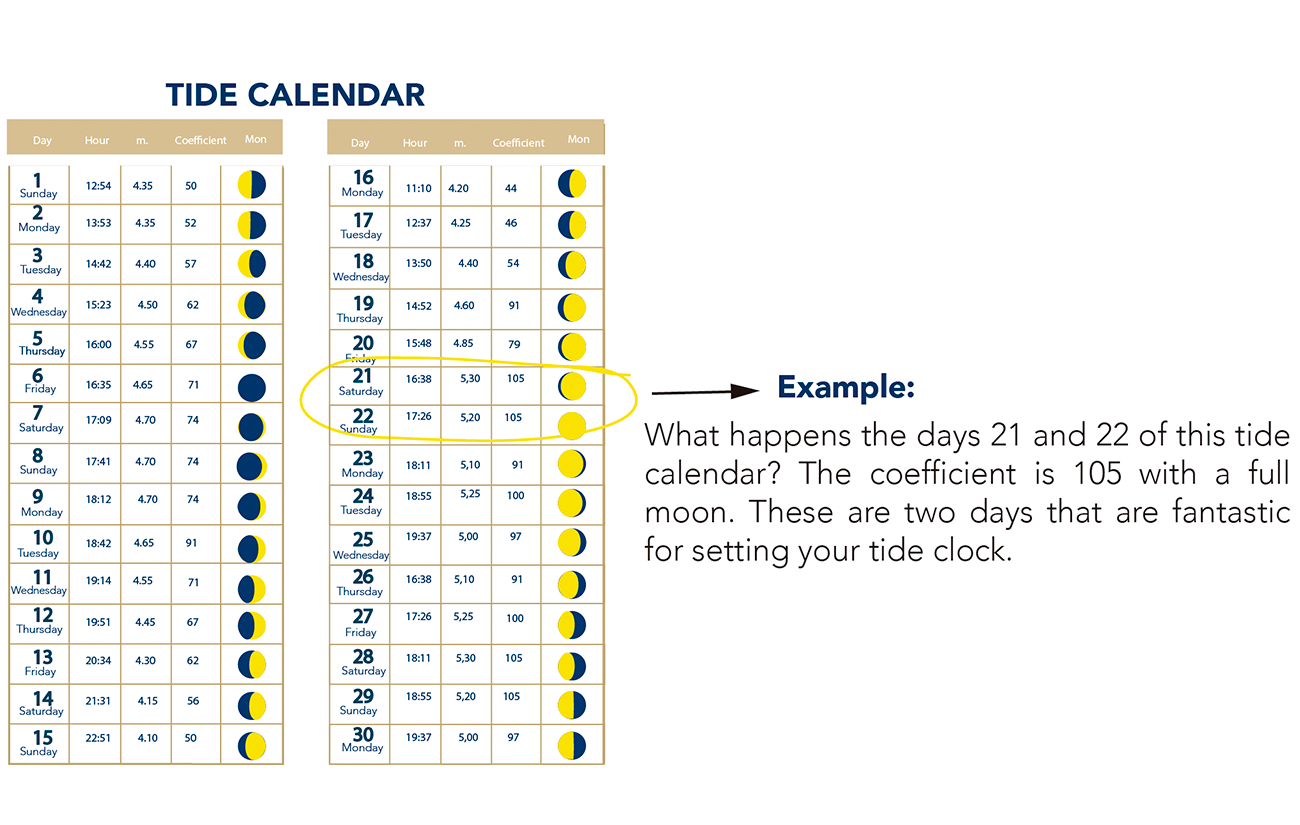
Position the hand at the top, at 0 HIGH TIDE using the thumbwheel located on the back of the watch.
Place the AA battery in the cavity provided for this purpose. And it's ready to go!

The elements that make up our tide clocks
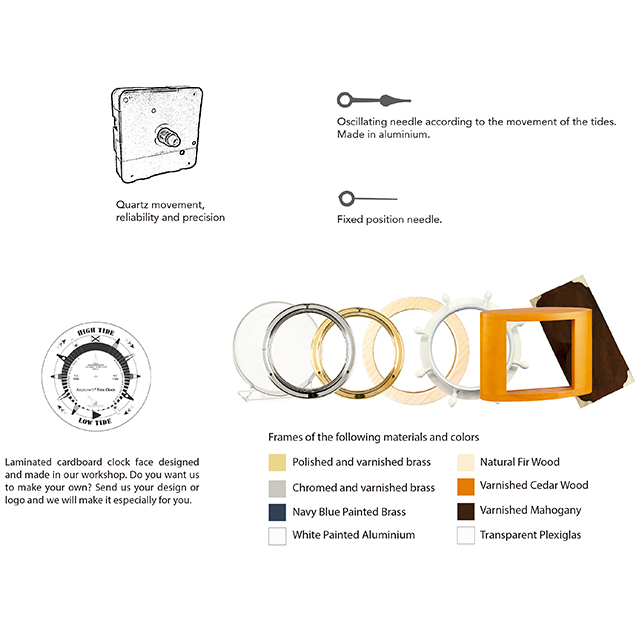
How do tides influence agriculture?
Tips for the garden
NEW MOON
The moon makes the water level rise and facilitates germination and growth.
The attraction is reduced, but the moonlight is intensified thus favouring the growth of the leaves.
CRESCENT MOON
Sap usually travels up in plants. It is time to harvest spinach, lettuce, artichokes, tomatoes, peas and apples; graft; plant trees and shrubs with leaves. In general, this period will be favoured to harvest what grows on the ground (fruits and vegetables). During this period, we will also take the opportunity to sow everything that does not spike (spinach, salads, onions). We will prune the shrubs and trees whose vigour is to be reduced. Seasonal products, fruits and vegetables harvested during this period will keep longer.
FULL MOON
The lunar attraction is reduced, creating more moisture in the soil. It's time to plant beets, carrots, onions, potatoes and bulbs.
WINNING MOON
Generally, pruning happens during this period. However, for young tree pruning, the branches will grow faster during the waxing moon. This period will be used to work the land, transplanting, planting and sowing everything that produces fruit or seeds. Fruit trees and shrubs will be planted, pruned and grafted. In this way the vitality of the plants will increase and it will be easier to fight against diseases and pests.
BEFORE THE NEW MOON
Planting will be avoided when the new moon approaches.
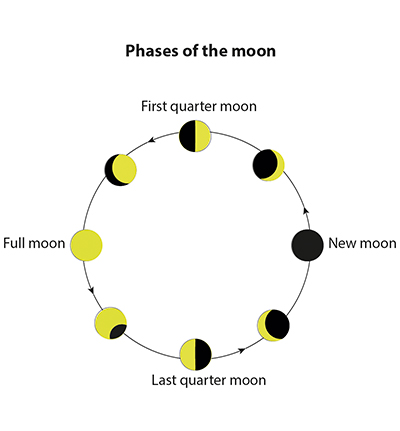
Tides and renewable energy.
Tidal energy is the energy that is obtained by taking advantage of the tides: by using an alternator, the system can be used to generate electricity, thus transforming tidal energy into electrical energy, a safer and more usable form of energy. It is a type of renewable energy, since the primary energy source is not exhausted by its exploitation, and it is clean since in the energy transformation no gaseous, liquid or solid polluting by-products are produced. However, the relationship between the amount of energy that can be obtained with current means and the economic and environmental cost of installing the devices for its process have prevented a notable implementation of this type of energy.
Other ways of extracting energy from the sea are: waves (wave energy), from the difference in temperature between the surface and the deep waters of the ocean, the oceanic thermal gradient; salinity, ocean currents or offshore wind energy.
In Spain, the Government of Cantabria and the Institute for Energy Diversification and Saving (IDAE) want to create an R&D (research and development) centre on the Santoña coast. The plant could meet the annual domestic consumption of some 2,500 homes.
LEXICON
Tide: Periodic movement of rise and fall of the sea level, due to the forces of gravitational attraction exerted by the Moon and the Sun on the Earth.
Low tide: It is the downward movement of the tide, from when the water is at the highest level until it reaches the lowest. Minimum level reached by an ebb or ebb tide on any given day
High tide: It is the upright movement of the tide.
Neap tide: When the Sun and Moon form a right angle, as when we see a half-moon, their gravitational pulls fight each other and we notice a smaller difference between high and low tides. These are called neap tides. "Neap" is an Anglo-Saxon word meaning "without the power". Neap tides are sometimes referred to as quadrature tides. Neaps result in less extreme tidal conditions.
Spring tide: When the Moon, Earth, and Sun fall in a straight line, which we call syzygy (siz-eh-gee), we notice the greatest difference between high and low tide water levels. These spring tides occur twice each month, during the full and new Moon. If the Moon is at perigee, the closest it approaches Earth in its orbit, the tides are especially high and low, "slack water" time that is shorter than average, and stronger tidal currents than average.
Storm surge: This is coastal flooding associated with a low-pressure atmospheric system (usually with a tropical cyclone). Storm surge occurs when winds push against the ocean surface. Storm surge is particularly damaging when it coincides with high tide, as the effects of the storm surge combine with those of the tide. It usually lasts a few hours but can be catastrophic, especially in low-lying coastal areas
Tide tables:
Tide tables are tables in which the daily predictions of the times of high and low tide, the height of high and low tides, the tidal coefficient, the amplitude of the tides and the lunar cycles are presented. The tide tables will be different from one location to another.
Semi-tidal period: It is the time it takes between a successive high tide and low tide.
Tide amplitude: The magnitude of the difference in elevation between low and high tides at a particular point in a body of water.
Tidal coefficient or tidal range: Tidal range is the difference in height between high tide and low tide. Tides are the rise and fall of sea levels caused by gravitational forces exerted by the Moon and Sun and by Earth's rotation. Tidal range depends on time and location.
High Water Interval: It is the time between the last hour and the next low or high tide.
Ebb tide: It is the period between high tide and low tide.
Slack tide/ Slack water: It is the moment in which the sea level remains fixed at high tide or low tide.
Intertidal zone: The intertidal zone, also known as the foreshore, is the area above water level at low tide and underwater at high tide (in other words, the area within the tidal range).
Current. Tidal currents are the product of gravitational interactions between the Sun, Moon, and Earth.
Flow current: Movement of the tidal current towards the coast or upstream of an estuary. The expression maximum flow can also be applied to any flow current at the moment when it reaches its maximum velocity.
Ebb Current: Movement of tidal current offshore or downstream of an estuary. The expression minimum reflux applies to the minimum velocity of a constant reflux current whose velocity decreases.
Crest: Highest point of a spreading wave.
Harmonic Motion: This is a periodic motion of constant frequency that an oscillating mass experiences when the restoring force is proportional to the displacement but in opposite directions.
